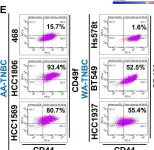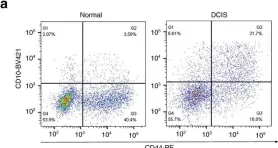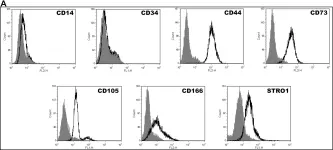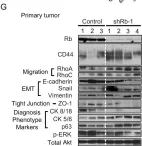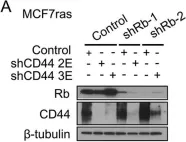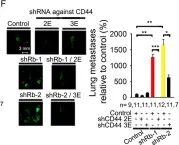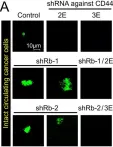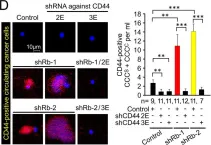Natural compounds have been increasingly investigated for their efficient anti-cancer activity. Xanthohumol (XN), a flavonoid derived from hops, has shown promise in preclinical studies for various cancers due to its unique biological properties. This study investigates the effects of XN and a cost-effective hop extract (HOP EX) on head and neck squamous cell carcinoma (HNSCC), focusing on their potential to modulate cancer stemness and enhance the efficacy of Cisplatin chemotherapy. Using a combination of flow cytometry, qPCR, and cellular assays, we assessed the impact of XN and HOP EX on cell viability, stemness, and chemoresistance in HNSCC cell lines. Further, we explored the underlying mechanisms by examining the induction of apoptosis, ER stress, and autophagy activation. Our findings demonstrate that both XN and HOP EX significantly decrease cell viability and stemness in HNSCC cells and enhance the cytotoxic effects of Cisplatin, suggesting a synergistic interaction. Mechanistically, we identified that the induction of ER stress and subsequent activation of the unfolded protein response (UPR) promote autophagy, leading to increased apoptosis. By modulating key cellular pathways such as ER stress and autophagy, these natural compounds could be developed into supportive treatments for HNSCC.
© 2025. The Author(s).
Product Citations: 125
In Scientific Reports on 16 April 2025 by Del Vecchio, V., Sanchez-Pajares, I. R., et al.
-
FC/FACS
-
Homo sapiens (Human)
-
Cancer Research
-
Cell Biology
BMSC-derived exosomes promote osteoporosis alleviation via M2 macrophage polarization.
In Molecular Medicine on 19 November 2024 by Zhang, Y., Bai, J., et al.
Osteoporosis is characterized by reduced bone mass due to imbalanced bone metabolism. Exosomes derived from bone mesenchymal stem cells (BMSCs) have been shown to play roles in various diseases. This study aimed to clarify the regulatory function and molecular mechanism of BMSCs-derived exosomes in osteogenic differentiation and their potential therapeutic effects on osteoporosis. Exosomes were extracted from BMSCs. Bone marrow-derived macrophages (BMDMs) were cultured and internalized with BMSCs-derived exosomes. Real-time quantitative PCR was used to detect the expression of macrophage surface markers and tripartite motif (TRIM) family genes. BMDMs were co-cultured with human osteoblasts to assess osteogenic differentiation. Western blot was performed to analyze the ubiquitination of triggering receptor expressed on myeloid cell 1 (TREM1) mediated by TRIM25. An ovariectomized mice model was established to evaluate the role of TRIM25 and exosomes in osteoporosis. Exosomes were successfully isolated from BMSCs. BMSCs-derived exosomes upregulated TRIM25 expression, promoting M2 macrophage polarization and osteogenic differentiation. TRIM25 facilitated the ubiquitination and degradation of TREM1. Overexpression of TREM1 reversed the enhanced M2 macrophage polarization and osteogenic differentiation caused by TRIM25 overexpression. TRIM25 enhanced the protective effect of BMSCs-derived exosomes against bone loss in mice. These findings suggested that BMSCs-derived exosomes promoted osteogenic differentiation by regulating M2 macrophage polarization through TRIM25-mediated ubiquitination and degradation of TREM1. This mechanism might provide a novel approach for treating osteoporosis.
© 2024. The Author(s).
-
FC/FACS
-
Homo sapiens (Human)
-
Biochemistry and Molecular biology
-
Immunology and Microbiology
In BMC Cancer on 8 November 2024 by Yoon, S. H., Lee, S., et al.
NAD(P)-dependent steroid dehydrogenase-like protein (NSDHL), which is involved in breast tumor growth and metastasis, has been implicated in the maintenance of cancer stem cells. However, its role in regulating breast cancer stem-like cells (BCSCs) remains unclear. We have previously reported the clinical significance of NSDHL in patients with estrogen receptor-positive (ER +) breast cancer. This study aimed to elucidate the molecular mechanisms by which NSDHL regulates the capacity of BCSCs in the ER + human breast cancer cell line, MCF-7.
NSDHL knockdown suppressed tumor spheroid formation in MCF-7 human breast cancer cells grown on ultralow-attachment plates. RNA sequencing revealed that NSDHL knockdown induced widespread transcriptional changes in the MCF-7 spheroids. TGF-β signaling pathway was the most significantly enriched Kyoto Encyclopedia of Genes and Genomes (KEGG) pathway (fold change ≥ 2, P ≤ 0.05) identified in NSDHL-knockdown MCF-7 spheroids compared with the control. In orthotopic tumor models injected with NSDHL-knockdown MCF-7 spheroids, tumor initiation and growth were strongly suppressed compared with those in the control.
BCSC populations with CD44+/CD24- and CD49f+/EpCAM + phenotypes and high ALDH activity were decreased in NSDHL-knockdown MCF-7 spheroids and xenograft tumors relative to controls, along with decreased secretion of TGF-β1 and 3, phosphorylation of Smad2/3, and expression of SOX2. In RNA-sequencing data from The (TCGA) database, a positive correlation between the expression of NSDHL and SOX2 was found in luminal-type breast cancer specimens (n = 998). Our findings revealed that NSDHL plays an important role in maintaining the BCSC population and tumor-initiating capacity of ER-positive MCF-7 spheroids, suggesting that NSDHL is an attractive therapeutic target for eliminating BCSCs, thus preventing breast cancer initiation and progression.
Our findings suggest that NSDHL regulates the BCSC/tumor-initiating cell population in MCF-7 spheroids and xenograft tumors.
© 2024. The Author(s).
-
Cancer Research
In Balkan Medical Journal on 6 September 2024 by Isildar, B., Ozkan, S., et al.
Mesenchymal stem cells (MSCs) play a key role in regenerative medicine due to their capacity to differentiate into multiple cell lines, regulate the immune system, and exert paracrine effects. The therapeutic impact of MSCs is primarily mediated through their secretome. The secretory and therapeutic potential of MSCs can be improved through preconditioning, which entails the application of hypoxic environments, 3-dimensional cell cultures, and pharmacological agents. Valproic acid (VPA) is a histone deacetylase inhibitor that is employed in medical practice for treating epilepsy and bipolar disorder. Hence, preconditioning MSCs with VPA is expected to induce histone acetylation, enhance gene expression, and beneficially modify the cells' secretomes.
To assess the effectiveness of VPA in enhancing and regulating the therapeutic potential of cells as well as its impact on MSC secretome profiles and ultrastructural morphologies.
Expiremental study.
Human umbilical cord MSCs were preconditioned with 2 mM VPA for 24 and 48 hours; untreated MSCs served as controls. The secretome secreted by the cells was assessed for its total protein content. Subsequently, interferon-gamma (IFN-γ), interleukin-17 (IL-17), IL-10, vascular endothelial growth factor, nerve growth factor (NGF), glial cell line-derived neurotrophic factor, and brain-derived neurotrophic factor (BDNF) levels in the secretome were analyzed using the ELISA method. The ultrastructural properties of the cells were studied under transmission electron microscopy.
Ultrastructural examinations revealed that the chromatin content of VPA-treated cells was reduced. VPA-preconditioned cells exhibited a higher density of rough endoplasmic reticulum, autophagic vesicles, and myelin figures on cytoplasmic structure analysis, which was indicative of increased secretion. Protein secretion was elevated in those cells, with notable increases in NGF and BDNF levels. Furthermore, the cytoskeletal rearrangement and elevated autophagic activity observed in the 48-hour preconditioned cells could indicate the initiation of neuronal differentiation. IL-10, IL-17, and IFN-γ were not detected in the secretome.
This study indicate that preconditioning with VPA enhances MSC activity and subsequently modifies the secretome content.
-
Homo sapiens (Human)
-
Genetics
-
Stem Cells and Developmental Biology
In Cellular and Molecular Life Sciences : CMLS on 11 July 2024 by Kushida, Y., Oguma, Y., et al.
Muse cells, identified as cells positive for the pluripotent surface marker SSEA-3, are pluripotent-like endogenous stem cells located in the bone marrow (BM), peripheral blood, and organ connective tissues. The detailed characteristics of SSEA-3(+) cells in extraembryonic tissue, however, are unknown. Here, we demonstrated that similar to human-adult tissue-Muse cells collected from the BM, adipose tissue, and dermis as SSEA-3(+), human-umbilical cord (UC)-SSEA-3(+) cells express pluripotency markers, differentiate into triploblastic-lineage cells at a single cell level, migrate to damaged tissue, and exhibit low telomerase activity and non-tumorigenicity. Notably, ~ 20% of human-UC-SSEA-3(+) cells were negative for X-inactive specific transcript (XIST), a naïve pluripotent stem cell characteristic, whereas all human adult tissue-Muse cells are XIST-positive. Single-cell RNA sequencing revealed that the gene expression profile of human-UC-SSEA-3(+) cells was more similar to that of human post-implantation blastocysts than human-adult tissue-Muse cells. The DNA methylation level showed the same trend, and notably, the methylation levels in genes particularly related to differentiation were lower in human-UC-SSEA-3(+) cells than in human-adult tissue-Muse cells. Furthermore, human-UC-SSEA-3(+) cells newly express markers specific to extraembryonic-, germline-, and hematopoietic-lineages after differentiation induction in vitro whereas human-adult tissue-Muse cells respond only partially to the induction. Among various stem/progenitor cells in living bodies, those that exhibit properties similar to post-implantation blastocysts in a naïve state have not yet been found in humans. Easily accessible human-UC-SSEA-3(+) cells may be a valuable tool for studying early-stage human development and human reproductive medicine.
© 2024. The Author(s).
-
Biochemistry and Molecular biology
In Elife on 10 December 2021 by Siddharth, S., Parida, S., et al.
Fig.2.E

-
FC/FACS
-
Collected and cropped from Elife by CiteAb, provided under a CC-BY license
Image 1 of 11
In Nat Commun on 13 September 2019 by Ding, L., Su, Y., et al.
Fig.1.A

-
FC/FACS
-
Homo sapiens (Human)
Collected and cropped from Nat Commun by CiteAb, provided under a CC-BY license
Image 1 of 11
In Nat Commun on 13 September 2019 by Ding, L., Su, Y., et al.
Fig.2.A

-
FC/FACS
-
Homo sapiens (Human)
Collected and cropped from Nat Commun by CiteAb, provided under a CC-BY license
Image 1 of 11
In PLoS One on 30 August 2014 by Tsai, H. L., Deng, W. P., et al.
Fig.1.A

-
FC/FACS
-
Homo sapiens (Human)
Collected and cropped from PLoS One by CiteAb, provided under a CC-BY license
Image 1 of 11
In PLoS One on 11 December 2013 by Kim, K. J., Godarova, A., et al.
Fig.2.F

-
WB
-
Collected and cropped from PLoS One by CiteAb, provided under a CC-BY license
Image 1 of 11
In PLoS One on 11 December 2013 by Kim, K. J., Godarova, A., et al.
Fig.2.G

-
WB
-
Collected and cropped from PLoS One by CiteAb, provided under a CC-BY license
Image 1 of 11
In PLoS One on 11 December 2013 by Kim, K. J., Godarova, A., et al.
Fig.4.A

-
WB
-
Collected and cropped from PLoS One by CiteAb, provided under a CC-BY license
Image 1 of 11
In PLoS One on 11 December 2013 by Kim, K. J., Godarova, A., et al.
Fig.5.F

-
ICC-IF
-
Collected and cropped from PLoS One by CiteAb, provided under a CC-BY license
Image 1 of 11
In PLoS One on 11 December 2013 by Kim, K. J., Godarova, A., et al.
Fig.6.A

-
ICC-IF
-
Collected and cropped from PLoS One by CiteAb, provided under a CC-BY license
Image 1 of 11
In PLoS One on 11 December 2013 by Kim, K. J., Godarova, A., et al.
Fig.6.B

-
ICC-IF
-
Collected and cropped from PLoS One by CiteAb, provided under a CC-BY license
Image 1 of 11
In PLoS One on 11 December 2013 by Kim, K. J., Godarova, A., et al.
Fig.6.D

-
ICC-IF
-
Collected and cropped from PLoS One by CiteAb, provided under a CC-BY license
Image 1 of 11
